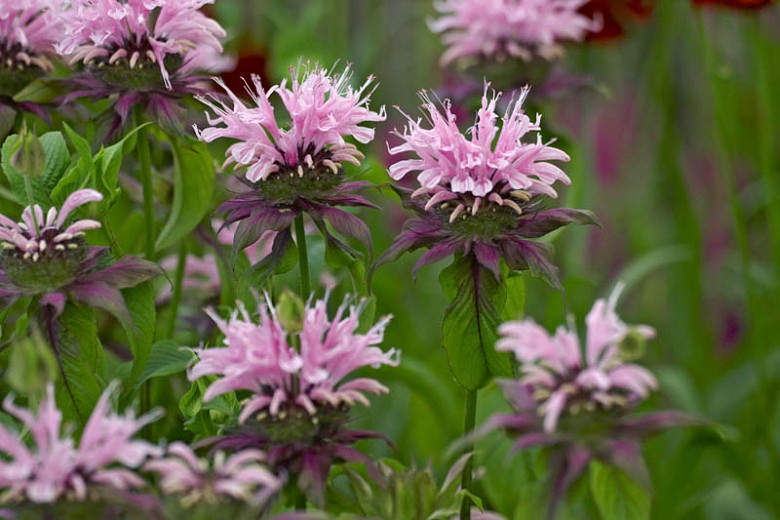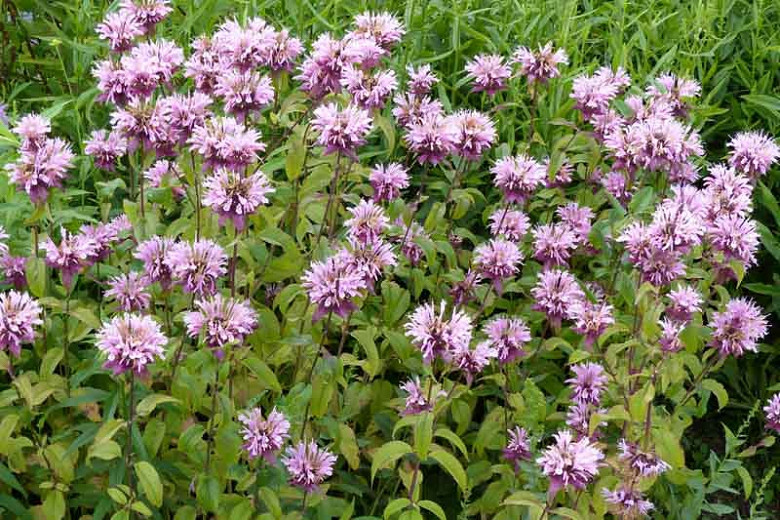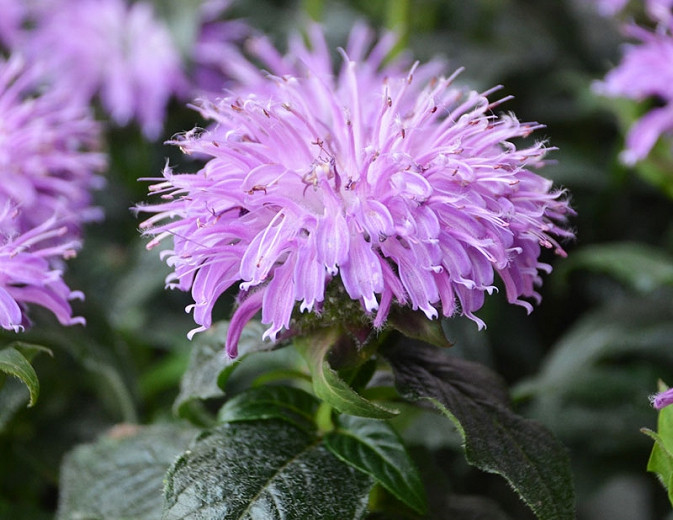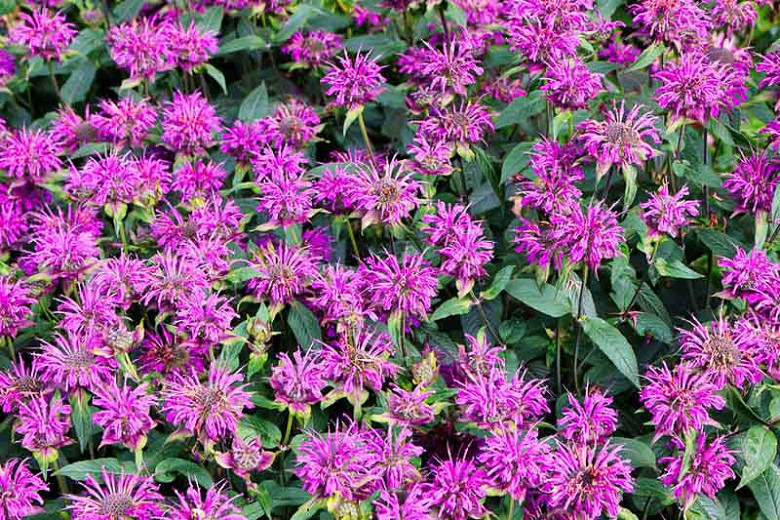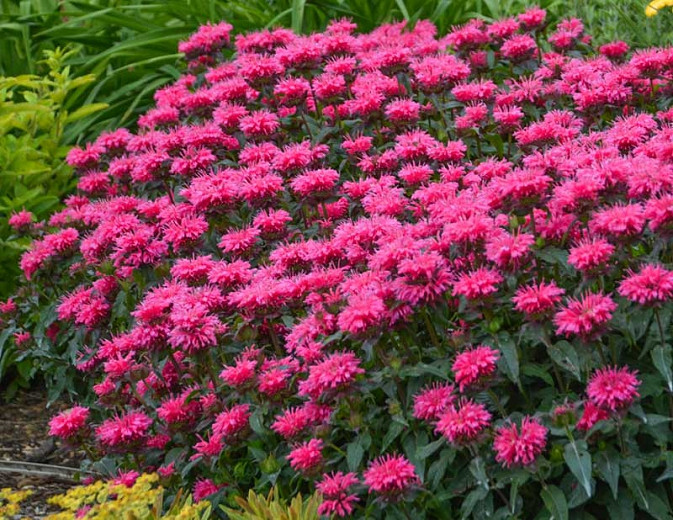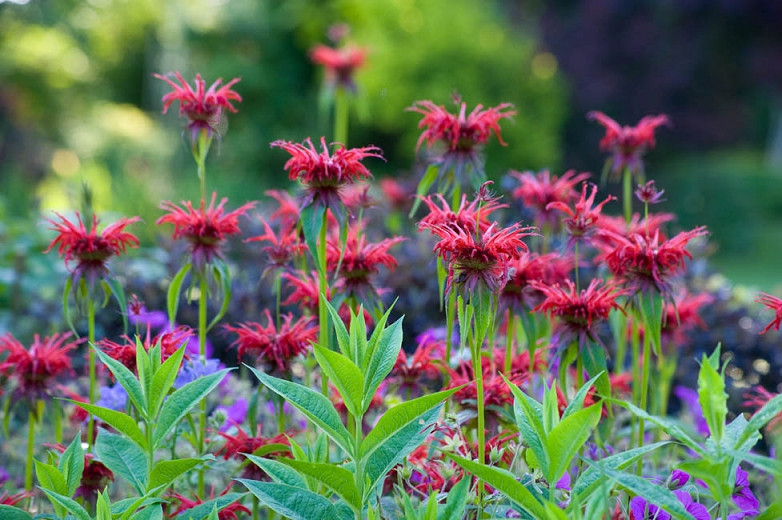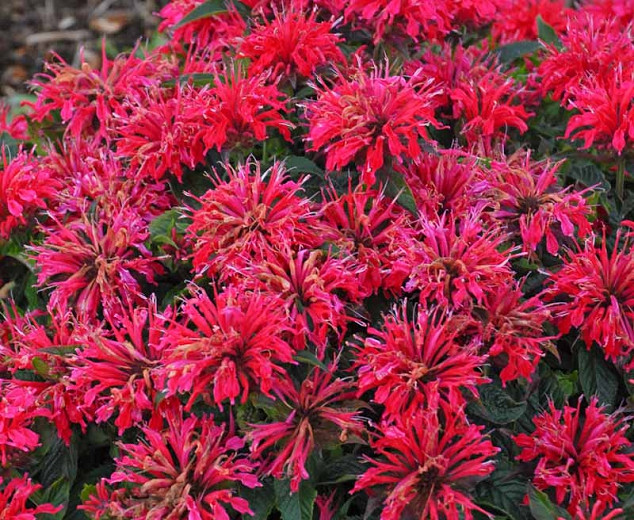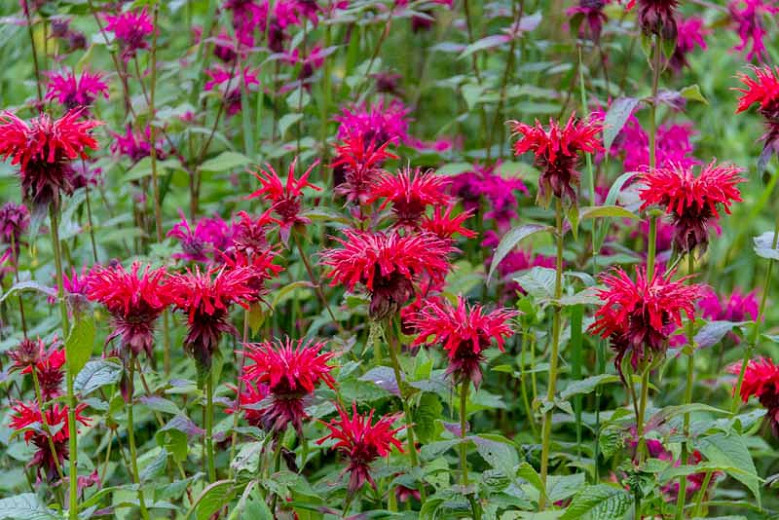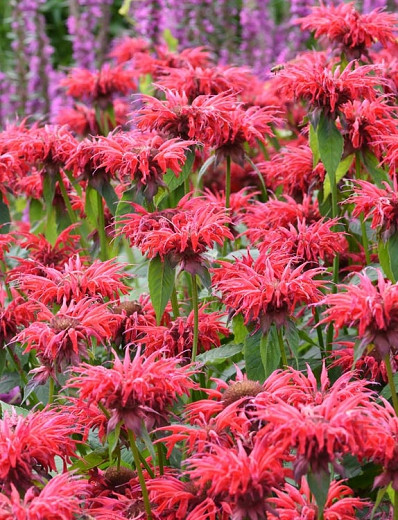Monarda Beauty of Cobham (Bee Balm)
Providing a fascinating floral display in summer, award-winning Monarda ‘Beauty of Cobham’ (Bee Balm) is a clump-forming perennial boasting masses of pale purplish-pink flowers, 2 in. across (5 cm), borne in dense, globular terminal heads. Blooming for weeks from mid-summer to early fall, they rest upon a whorl of decorative purple bracts and attract scores of butterflies and hummingbirds.
Providing a fascinating floral display in summer, award-winning Monarda 'Beauty of Cobham' (Bee Balm) is a clump-forming perennial boasting masses of pale purplish-pink flowers, 2 in. across (5 cm), borne in dense, globular terminal heads. Blooming for weeks from mid-summer to early fall, they rest upon a whorl of decorative purple bracts and attract scores of butterflies and hummingbirds. Their vibrant color is set off to perfection by the bright, fresh green of the leaves, which are delightfully fragrant and can be enjoyed in salads or simply by passing by. This Monarda is significantly more resistant to powdery mildew than older varieties.
- Recipient of the prestigious Award of Garden Merit of the Royal Horticultural Society
- Grows in clumps of upright stems, up to 2-3 ft tall (60-90 cm) and 1-2 ft. wide (30-60 cm)
- Performs best in full sun or partial shade in moderately fertile, humus-rich, moist but well-drained soil. It is not too fussy about soils, provided they are consistently kept moist. Protect from excessive winter wet and do not allow it to dry out in summer. Providing good air circulation to combat powdery mildew is important.
- This showy perennial is a striking addition to informal borders or prairies and meadows. The boldness of its blooms makes it terrific for massing or as an accent plant. Great for containers, it makes excellent cut flowers too.
- Monarda flowers attract streams of butterflies, hummingbirds, and other beneficial pollinators, but this plant is deer and rabbit resistant.
- Deadhead spent flowers to encourage new blooms. Fast-growing, Monarda spreads vigorously and will need to be divided every 3 years.
- Should be cut to the ground after flowering to promote the growth of new healthy shoots and leaves.
Requirements
| Hardiness | 4 – 9 |
|---|---|
| Heat Zones | 1 – 9 |
| Climate Zones | 1, 1A, 1B, 2, 2A, 2B, 3, 3A, 3B, 4, 5, 6, 7, 8, 9, 10, 11, 14, 15, 16, 17, A2, A3 |
| Plant Type | Perennials |
| Plant Family | Monarda – Bee Balms |
| Exposure | Full Sun, Partial Sun |
| Season of Interest | Summer (Mid,Late)Fall |
| Height | 2' – 3' (60cm – 90cm) |
| Spread | 1' – 2' (30cm – 60cm) |
| Spacing | 18″ – 24″ (45cm – 60cm) |
| Water Needs | Average |
| Maintenance | Average |
| Soil Type | Chalk, Clay, Loam, Sand |
| Soil pH | Acid, Alkaline, Neutral |
| Soil Drainage | Moist but Well-Drained |
| Characteristics | Cut Flowers, Fragrant, Plant of Merit, Showy |
| Tolerance | Clay Soil, Deer |
| Attracts | Birds, Butterflies, Hummingbirds |
| Garden Uses | Beds and Borders, Patio and Containers |
| Garden Styles | City and Courtyard, Coastal Garden, Informal and Cottage, Prairie and Meadow |
